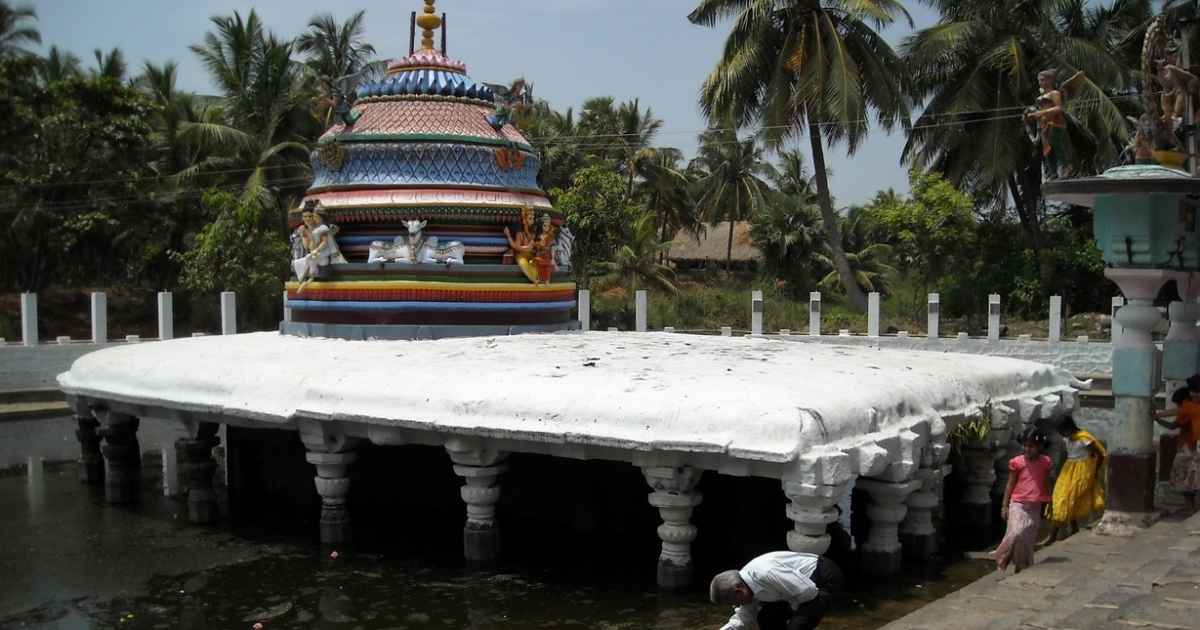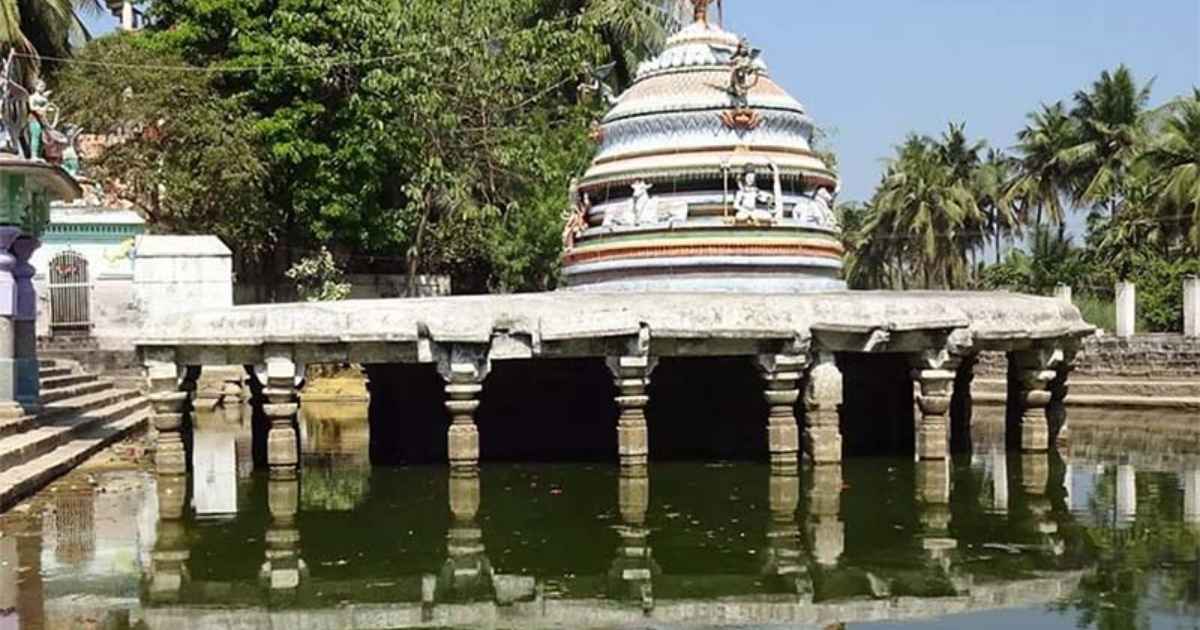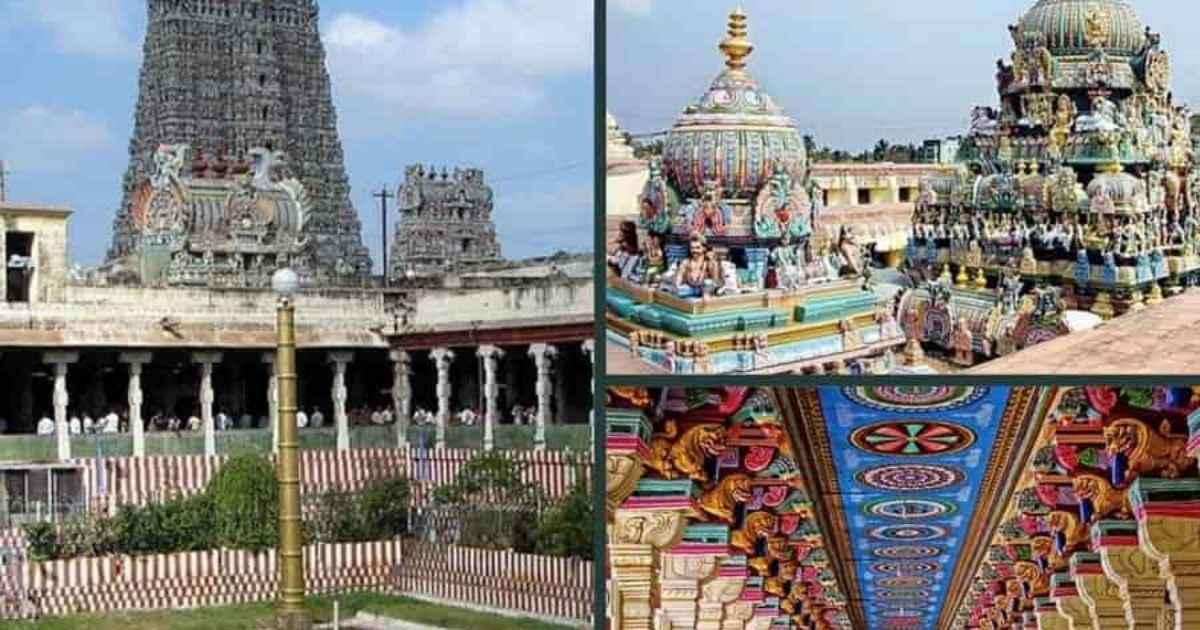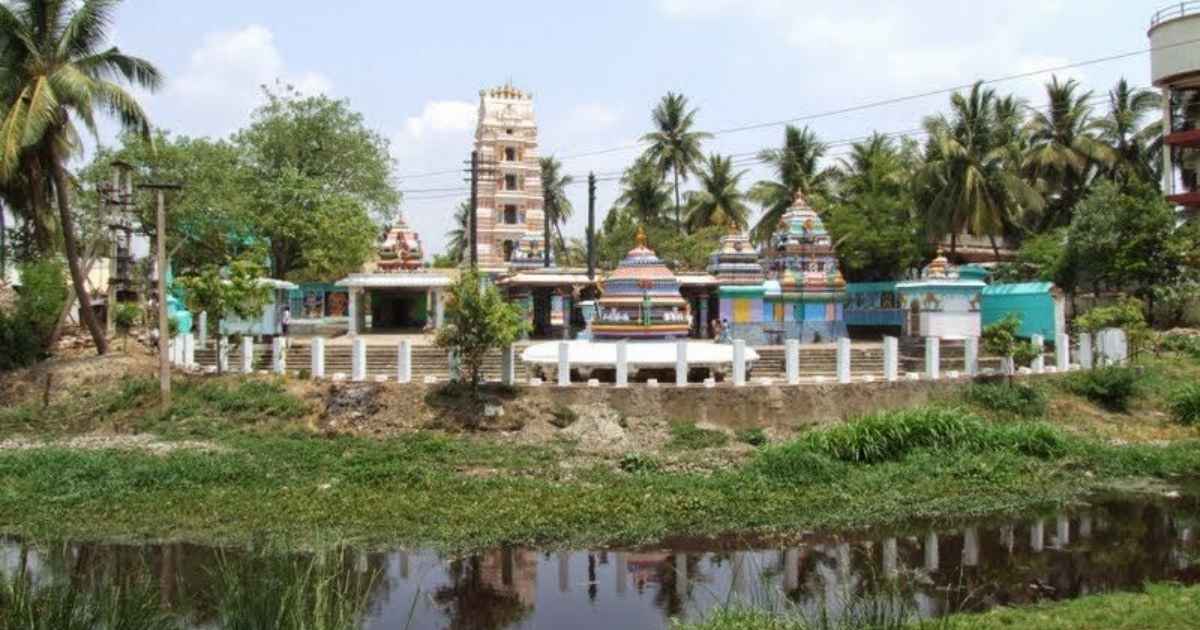I’ve always loved visiting temples, but finding one that’s both peaceful and full of deep history isn’t always easy. A friend once told me about Rameswaram Temple, tucked away in a small Andhra village, and I couldn’t help but wonder ;what makes it so special? Is it just another Shiva temple, or is there something truly different about this place?
In this blog, you’ll get a complete guide to Rameswaram Temple ;from its location and legends to unique features, timings, and how to get there. Whether you’re planning a visit or just curious about its story, everything you need to know is right here. Let’s explore this hidden gem together.
Rameswaram Temple History
The origins of Rameswaram Temple trace back to ancient times, wrapped in myths, legends, and a deep sense of spiritual reverence. Locals believe that the temple was first consecrated during the Treta Yuga, when Lord Sri Rama installed the Rameswara Lingam to atone for his actions in battle. Over the centuries, this sacred place evolved from a humble shrine to a significant pilgrimage destination in South India. Historical references even link the temple’s roots to the Vayu Purana and stories found in the Markandeya Purana.
By the time of the Eastern Chalukyas, the temple had already gained prominence as a center of devotion and learning. Inscriptions discovered on-site point to royal temple donations, land grants, and patronage from kings like Shakti Varma and Vallabhara. These records highlight how the temple wasn’t just a religious site, but also a hub of community, culture, and history in West Godavari District. Its survival through centuries is a testament to the faith and resilience of the people who kept its legacy alive.
Location and Overview

Rameswaram Temple is located in the peaceful village of Penumantra, nestled in the West Godavari District of Andhra Pradesh. Far from crowded tourist circuits, this temple sits quietly amid lush greenery and local farms, just a short drive from towns like Tanuku, Tadepalligudem, and Attili. It’s a hidden gem in South India that many travelers still haven’t discovered ;making it all the more special for those who do. The area around the temple is known for its calm atmosphere, making it ideal for spiritual reflection and quiet travel.
Despite being lesser-known than the Rameswaram in Tamil Nadu, this temple holds deep spiritual significance, especially for those who revere Lord Shiva. The temple complex includes the sacred Rameswara Lingam, traditional South Indian architecture, and open courtyards where daily Abhishekam rituals are performed. Whether you’re a pilgrim or just someone looking to explore a meaningful, peaceful place, this temple offers a rare blend of history, devotion, and simplicity.
Unique Features of the Temple

What sets Rameswaram Temple apart isn’t just its age or spiritual vibe ;it’s the blend of legend, unique rituals, and architectural quirks you won’t find in many other places. Unlike more commercialized temples, this one holds onto its traditional roots with deep reverence and simplicity. Pilgrims are drawn here not only to seek blessings from Lord Shiva but also to witness rare spiritual elements like the Mahasmasana (cremation ground), which is considered sacred rather than somber.
One of the most fascinating aspects is the temple’s connection to different Yugas and deities. Stories passed down through generations mention divine figures like Parasurama, Kalabhairava Swamy, and even Bhudevi. The temple’s layout also carries symbolic meaning, and each section ;like the Kalyana Mandapam and Rajagopuram,tells a part of its spiritual story.
Notable Features of Rameswaram Temple:
- The Rameswara Lingam is believed to have been installed by Lord Sri Rama himself.
- It houses the sacred Parasurameshwara Linga and Saptakateswara Linga.
- Contains the Mahasmasana, an ancient cremation site with deep spiritual value.
- A shrine dedicated to Kalabhairava Swamy, the fierce guardian deity.
- Rich in mythological connections to Treta Yuga and Puranic legends.
- Minimalist yet powerful temple architecture with stone inscriptions and carvings.
- Daily Abhishekam rituals and festivals rooted in Vedic traditions.
- Located away from tourist chaos, offering a peaceful, authentic spiritual experience.
The Legend of Parasurama and Rameswara Lingam
According to local belief and ancient scriptures, Parasurama, the warrior-sage and sixth avatar of Lord Vishnu, plays a central role in the story of Rameswaram Temple. After eliminating a dynasty of corrupt Kshatriyas, Parasurama was burdened by the sin of violence and sought spiritual redemption. It’s said he wandered across India in search of peace, finally arriving at Penumantra, where the divine energies of Lord Shiva were strong. Here, he installed the sacred Rameswara Lingam as a symbol of penance and devotion.
The presence of this Shiva Linga is believed to balance the fiery energy of Parasurama with the calming essence of Shiva, making the temple a powerful site for seekers of inner healing. Stories also mention that Parasurama was guided by Devarshis and Munis, who instructed him to perform Abhishekam rituals under the sacred Aswartha tree near the temple. To this day, pilgrims believe that offering prayers here helps cleanse deep karmic burdens ;just like it did for the great sage himself.
The Mahasmasana and Kalabhairava Swamy Temple
One of the rare and powerful features of Rameswaram Temple is its Mahasmasana, or sacred cremation ground. While most temples are built far from such places, this one embraces it as a space of deep spiritual energy. It’s believed that performing rituals here for ancestors helps guide their souls toward peace and moksha (liberation). This presence adds a layer of seriousness and reverence that’s unique to this temple.
Watching over the Mahasmasana is Kalabhairava Swamy, a fierce and protective form of Lord Shiva. His shrine stands near the cremation area, and devotees offer oil lamps and prayers asking for courage, clarity, and spiritual strength. According to local lore, Kalabhairava guards not just the temple grounds, but also the spiritual paths of those who visit. His presence brings a deep sense of protection to this powerful part of the temple.
The Gostani River and Its Significance

Flowing gently near Rameswaram Temple, the Gostani River isn’t just a scenic backdrop ;it’s considered sacred and spiritually potent. Pilgrims believe its waters purify the body and soul, much like the Ganges in the north. Before entering the temple, many devotees take a ritual bath in the river as a symbolic act of cleansing. The calm, serene setting of the river adds to the peaceful energy that surrounds Penumantra and its temple grounds.
According to temple lore, the Gostani River once carried holy vibrations from Kolleru Lake and the nearby sacred lands of Tadepalligudem and Attili. Some puranic texts even describe the river as a spiritual channel guided by divine energies, linking various pilgrimage spots across Andhra Pradesh. Whether or not you believe the legends, standing by the riverbank, you can feel a stillness that makes you pause and reflect ;something rare and beautiful in today’s busy world.
Historical Background and Temple Architecture

The history of Rameswaram Temple is layered with centuries of devotion, royal patronage, and architectural evolution. While oral traditions trace its roots back to the Treta Yuga, the earliest known records of the temple date to the time of the Eastern Chalukyas, who ruled parts of Andhra Pradesh. Inscriptions found on temple walls reference rulers like Shakti Varma and Vallabhara, who contributed to the temple’s upkeep and expansion through donations, land grants, and support for Vedic scholars. These records offer rare insights into how spiritual and political forces shaped the temple’s journey through time.
The architecture of the temple reflects classic South Indian temple design, with a modest Rajagopuram, intricately carved mandapas, and pillared halls. The Kalyana Mandapam, where celestial weddings and rituals are performed, stands out for its simple yet elegant design. Stone carvings feature mythological scenes, floral motifs, and depictions of deities like Kalabhairava Swamy, Parasurama, and Lord Shiva in various forms. Unlike larger temple complexes, this one preserves an intimate, grounded atmosphere ;inviting quiet reflection rather than grandeur.
Inscriptions and Donations
The walls and stone slabs of Rameswaram Temple hold more than just age ;they carry the echoes of a long and generous past. Several ancient inscriptions have been discovered within the temple complex, many written in early Telugu and Sanskrit. These inscriptions record royal grants, land donations, and temple offerings made by kings, nobles, and even local merchants. Figures like Shakti Varma, Pratap Annamaraju, and Vallabhara are mentioned as key patrons who ensured the temple’s survival and spiritual activity through their contributions.
Beyond wealth, these records reveal how deeply the community valued this sacred place. Offerings weren’t limited to gold or land ;they included cattle, oil for lamps, materials for Abhishekam, and support for temple festivals. The Markandeya Purana and other sacred texts were also preserved and read aloud in the temple, as noted in several engravings. Today, these historical inscriptions serve as both cultural heritage and a spiritual reminder of collective devotion across generations.
Also visit: Vontimitta Kodandarama Swamy Temple: A Divine Marvel of Andhra Pradesh
How to Reach Natta Rameswara Temple
Getting to Rameswaram Temple in Natta Rameswaram village, Penumantra, West Godavari District, is straightforward whether you’re coming by road, train, or air. The nearest town is Tanuku, about 16 km away, with regular APSRTC buses and auto‑rickshaws connecting to the temple (soki.in). If you’re arriving by train, the closest railheads are Attili or Manchili, each around 3–6 km from the temple, after which you can take a short auto‑rickshaw ride (soki.in). For air travelers, Rajahmundry Airport is about 65–77 km away, and Vijayawada Airport is roughly 100–123 km away ;both offer ground transport options to Tanuku or Attili before continuing on to Penumantra (soki.in).
Once you reach Tanuku or Attili, local autos or buses to Marteru or Penumantra are available and drop you within easy reach of the temple. If arriving via larger nearby cities like Bhimavaram (25 km) or Tadepalligudem (24 km), APSRTC buses and local taxis are viable options, too (soki.in). The roads are well-paved, and signs from Tanuku toward Penumantra/Natta Rameswaram make navigation simple. Travelers often combine temple visits with nearby attractions like Kolleru Lake, Perupalem Beach, or other temples around Attili and Tadepalligudem, making the journey part of the adventure itself.
Read must: Sri Kanaka Mahalakshmi Temple : Powerful Goodness of Vizag
Natta Rameswara Temple Timings
Planning your visit around the correct darshan timings makes a big difference ;you’ll get to experience the temple’s energy at its best. The temple follows traditional South India temple timings, with morning and evening sessions highlighted by Abhishekam, Archana, and other rituals. Midday closes for puja preparations, allowing priests to conduct ceremonies and cleanse the sanctum. Sundays and festival days often see extended hours or special sessions, especially during Vaishakh or Shiva-themed festivals.
Here’s a handy table summarizing regular visiting hours. Make sure to double-check during local holidays or unique events, as slight variations may occur:
| Event | Morning | Midday Break | Evening |
| Darshan (General Entry) | 6:00 AM – 11:00 AM | 11:00 AM – 4:00 PM | 4:00 PM – 8:00 PM |
| Abhishekam Ritual | 7:30 AM – 8:30 AM | ; | ; |
| Archana / Archavalokana | 10:00 AM – 11:00 AM | ; | 6:00 PM – 7:00 PM |
| Temple Closed | ; | 11:00 AM – 4:00 PM | ; |
Natta Rameswara Temple Location
Natta Rameswara Temple is situated in the quaint village of Penumantra, within the West Godavari District of Andhra Pradesh, South India. Tucked away from the usual pilgrimage routes, this serene spot lies near towns like Tanuku, Tadepalligudem, and Attili, making it a hidden gem that blends devotional calm with rural charm. Surrounded by coconut groves and rice paddies, the temple’s setting offers a peaceful contrast to bustling city temples. Whether you’re driving or taking local transport, you’ll feel you’ve stepped into a timeless, spiritual world.
The village itself is easy to pinpoint on maps, and most GPS systems recognize “Natta Rameswaram” or “Penumantra Temple.” It’s about 24 km from Tadepalligudem, 25 km from Bhimavaram, and roughly an hour’s drive (65–75 km) from Rajahmundry Airport. Nearby landmarks include Kolleru Lake, Perupalem Beach, and the Coringa Wildlife Sanctuary, which make great side trips if you’re exploring the region. With its rural charm, spiritual depth, and easy accessibility, the temple’s location truly enhances the overall experience.
Read must : The Powerful Lakshmi Narasimha Swamy Temple in Karimnagar
Frequently Asked Questions (FAQs)
Where exactly is Rameswaram Temple located?
It’s in Natta Rameswaram village, Penumantra, West Godavari District, Andhra Pradesh ;near Tanuku, Tadepalligudem, and Attili.
Is this the same as the Rameswaram in Tamil Nadu?
No, this is a different temple in Andhra Pradesh, known for its connection to Parasurama and unique spiritual heritage.
What’s special about this temple?
It features the Rameswara Lingam, Mahasmasana, Kalabhairava shrine, and links to Treta Yuga legends and ancient inscriptions.
Are there any nearby places to visit?
Yes ;Kolleru Lake, Perupalem Beach, Coringa Sanctuary, and nearby temples in Tanuku and Tadepalligudem are worth exploring.
What should I know before visiting?
Follow temple timings, dress modestly, expect peaceful surroundings, and carry cash as digital payment options are limited locally.
Conclusion
Visiting the Rameswaram Temple in Penumantra isn’t just about ticking off another destination ;it’s about experiencing something deeply spiritual and grounding. The peaceful setting, powerful legends, and sacred rituals create an atmosphere that stays with you long after you leave.
Whether you’re a pilgrim seeking blessings, a history lover, or just someone exploring South India’s hidden gems, this temple has something meaningful to offer. It’s one of those rare places where the past, faith, and nature come together in quiet harmony.


